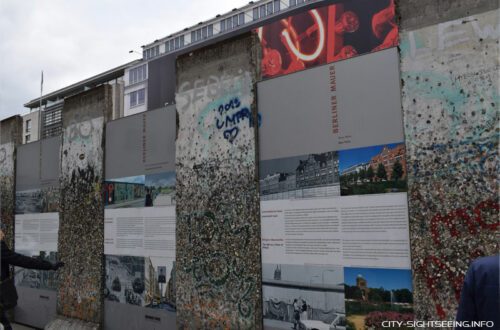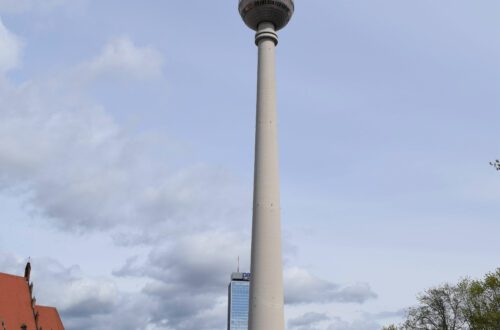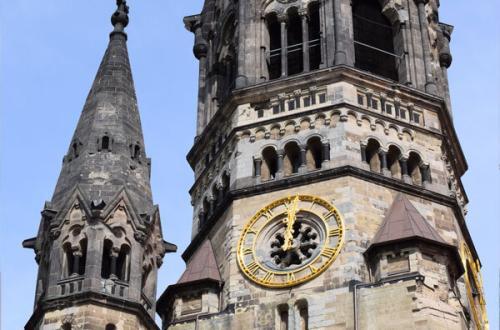Charlottenburg Palace
Charlottenburg Palace, located in the Charlottenburg district of Berlin, stands as the city’s largest and most magnificent palace. Nestled in a beautiful garden, it owes its name to the first Queen of Prussia, Queen Sophie Charlotte, who commissioned the construction of the summer palace. After nearly 100 years of construction, the palace, along with the Orangery, the palace park, and ancillary buildings, ranks among the most beautiful and impressive sights in the city of Berlin.
Table of Contents
Charlottenburg Palace in Berlin | Palace for Queen Sophie Charlotte

Sophie Charlotte, an art-loving personality, had a summer residence built outside Berlin. Originally dedicated as Schloss Lietzenburg, it was later renamed “Charlottenburg Palace” in memory of the queen. Throughout history, the palace underwent multiple expansions and is now known under the name that signifies its significant cultural heritage.
History of Charlottenburg Palace
In 1695, architect Johann Arnold Nering was commissioned by Sophie Charlotte to plan and build a summer residence on the property, a gift from her husband, Elector Friedrich III. In 1699, the palace was inaugurated as Schloss Lietzenburg.
Known for her artistic taste, Queen Sophie Charlotte invited poets, philosophers, musicians, and artists to her estate, which became known as “Sophie Charlotte’s Musenhof.” After the queen’s untimely death at the age of 36, the palace and its surroundings were renamed Charlottenburg in her memory by her husband.
Following the death of Friedrich I, the palace saw limited use by Friedrich Wilhelm until King Friedrich II resumed its use as a residence. In 1744, he began transforming Potsdam‘s city palace into his permanent residence. Additionally, he commissioned the construction of Sanssouci Palace in Potsdam as a summer residence. Charlottenburg then served primarily for family celebrations.
In later years, it was the residence of King Friedrich Wilhelm III and Luise. The last occupant was Emperor Friedrich III in 1888. Afterward, the palace ceased to be used as a residence.
Architecture of Charlottenburg Palace
Constructed between 1695 and 1791 in several stages, Schloss Charlottenburg is an impressive ensemble in the styles of Baroque, Rococo, and Neoclassicism. The architects behind this masterpiece were Johann Arnold Nering, Eosander von Göthe, Georg Wenzeslaus von Knobelsdorff, and Carl Gotthard Langhans.
Originally designed as a small garden and pleasure palace, it was transformed into a representative seat after the Elector’s coronation in 1701, marking him as the first King of Prussia. This redesign was executed by architect Eosander von Göthe.
The present recognizable form of the palace, however, was achieved later. Friedrich Wilhelm II commissioned Carl Gotthard Langhans to add a palace theater at the end of the western wing and a Small Orangery, giving the palace its current appearance.
The impressive architectural ensemble includes not only the palace but also the 55-hectare Schlossgarten Charlottenburg, featuring the Belvedere, the Mausoleum, and the Neuer Pavillon. Designed in French Baroque style by Siméon Godeau in 1697, the palace garden completes the majestic overall picture.
Annual Visitor Numbers
The palace attracts nearly 600,000 visitors each year.
Address
Spandauer Damm 10, 10585 Berlin
Opening Hours
From November to March, the palace is open Tuesday to Sunday from 10:00 am to 4:30 pm. From April to October, Tuesday to Sunday, you can visit from 10:00 am to 5:30 pm.
Ticket Prices
Adults: €12, Concessions: €8
Tickets
Experience a unique visit to Charlottenburg Palace and immerse yourself in an exquisite ambiance that provides the perfect setting for the selected program of the Berliner Residenz Orchester and vocal soloists. Enjoy masterpieces from the Baroque and Classical periods and be enchanted by the outstanding musical performance in this historic palace. A visit that combines cultural enjoyment and historical flair.
Weiteres / More:






